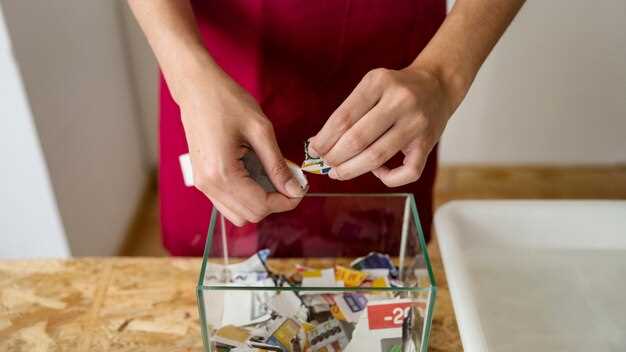
In the world of DIY projects, ingenuity often meets practicality. One such project is the Affordable Adjustable Splitter, which serves as a versatile solution for various applications ranging from audio distribution to power management. Designed for enthusiasts who appreciate both functionality and cost-effectiveness, this splitter enables users to adapt their setups without breaking the bank.
Building your own adjustable splitter not only enhances your technical skills but also provides you with a custom solution tailored to your specific needs. This project utilizes commonly available materials, making it an ideal choice for both novice and experienced DIY enthusiasts. With a few simple components, you can create a device that accommodates different configurations and requirements.
Throughout this article, we will guide you through the step-by-step process of creating your own adjustable splitter. You’ll learn about the necessary materials, tools, and techniques involved, while also exploring the potential applications and benefits of having a custom splitter at your fingertips. Get ready to embark on an exciting journey of creativity and problem-solving that will not only meet your needs but also enhance your DIY portfolio.
Choosing the Right Materials for Your Splitter Design
When embarking on a DIY splitter project, selecting the right materials is crucial for achieving both functionality and durability. The choice of materials can significantly impact the performance of your splitter and its overall cost-effectiveness.
1. Enclosure Materials: The outer casing of your splitter should be made from materials that provide protection and insulation. Common choices include plastic, aluminum, and ABS. Plastic is lightweight and can be molded into various shapes, while aluminum offers excellent heat dissipation and sturdiness. ABS is a versatile thermoplastic that combines strength and ease of fabrication.
2. Conductor Materials: The conductors are essential for signal transmission. Copper is the go-to choice due to its superior conductivity, but you may also consider tinned copper to prevent oxidation. For budget-conscious projects, aluminum conductors are lighter and cost-effective but may require larger diameters to achieve similar conductivity levels.
3. Connectors: The quality of connectors directly affects the reliability of your splitter. Look for connectors made from gold-plated or nickel-plated materials to enhance connectivity and reduce corrosion. Ensure that the connectors are compatible with your intended use–whether for audio, video, or data signals.
4. Insulation Materials: Adequate insulation is essential for preventing signal loss and protecting against electromagnetic interference. PVC and PTFE are popular choices. PVC is cost-effective, while PTFE provides excellent thermal stability and low friction properties, making it ideal for high-frequency applications.
5. Fasteners and Supports: Choose durable fasteners such as stainless steel or nylon to ensure structural integrity. Nylon fasteners are lightweight, resistant to chemicals, and provide good strength, while stainless steel offers enhanced durability, especially in outdoor settings.
Overall, selecting the right materials for your splitter project is vital to ensure its longevity and effectiveness. A balance between cost, accessibility, and performance will help you create a high-quality splitter that meets your needs.
Step-by-Step Assembly Instructions for a Custom Splitter

Creating a custom splitter can be an exciting project for DIY enthusiasts. This guide will walk you through assembling a versatile and affordable adjustable splitter. Follow each step carefully to ensure a successful build.
Materials Needed:
- 1x Adjustable resistor (1kΩ to 10kΩ)
- 2x RCA connectors
- 2x coaxial cables (length as required)
- 1x project box
- Wire stripper
- Soldering iron and solder
- Heat shrink tubing
- Electrical tape
Tools Required:
- Screwdriver
- Multimeter
- Wire cutters
Assembly Steps:
Step 1: Prepare the Project Box
Start by taking the project box and identifying where you will drill holes for the RCA connectors and the adjustable resistor. Use a drill to create holes that snugly fit the connectors. Ensure the layout allows easy access to all components.
Step 2: Prepare Cables
Take your coaxial cables and strip about 1 inch of insulation from both ends. Be careful not to damage the inner conductor. You should see a central wire and a surrounding shield. Twist the shield together to create a single point for grounding if needed.
Step 3: Attach RCA Connectors
Solder one end of each coaxial cable to an RCA connector. Connect the inner wire to the center pin and the shield to the outer pin. Make sure the solder joint is secure and use heat shrink tubing for insulation. Repeat this for both cables.
Step 4: Install the Adjustable Resistor
Solder the other end of the first coaxial cable to one terminal of the adjustable resistor. Connect the second coaxial cable to the other terminal. Ensure the connections are solid. The adjustable resistor will control the signal level that each output receives.
Step 5: Final Connections
Use a multimeter to verify that there are no short circuits in your connections. If everything checks out, connect the shield of the coaxial cables together and solder them to the ground of the project box if desired. This provides a common ground and reduces noise.
Step 6: Secure Everything in the Project Box
Once all connections are made and checked, carefully place the components inside the project box. Use electrical tape to secure any loose wires and prevent them from coming into contact with one another. Close the box and secure it with screws.
Step 7: Testing
Connect your custom splitter to a power source or signal source and use a multimeter to test the output levels from both RCA connectors. Adjust the resistor to ensure that each output is receiving the appropriate signal strength before finalizing the project.
Step 8: Final Touches
After testing, label the input and output connections on the project box for easy identification in future use. Ensure the project box is closed properly and all cables are securely fastened to prevent wear.
The assembly of your custom splitter is now complete. With these simple steps, you’ve created an affordable and adjustable splitter tailored to your needs. Happy DIYing!
Testing and Troubleshooting Your Adjustable Splitter Setup

Once you’ve assembled your adjustable splitter, it’s essential to ensure it operates correctly. Testing involves verifying signal quality, connection integrity, and appropriate voltage levels. Here are some steps to guide you through this process:
1. Checking Signal Quality: Start by connecting the splitter to your source device, such as a receiver or an antenna. Use a quality signal meter or an oscilloscope to measure the output signals from each port. Look for any significant loss in strength or distortion. Ideally, the output should closely match the input signal levels when no load is applied.
2. Verifying Connections: Poor connections can lead to signal degradation. Inspect each connection point for any visible signs of wear or damage. Make sure all cables are securely fastened, and the connectors are free from corrosion. If possible, use a multimeter to check for continuity across each connection.
3. Testing With Different Loads: To assess how your splitter performs under various conditions, connect different devices to each output port. Observe if the signal maintains its strength. Ensure that the splitter does not introduce excessive attenuation or interference when multiple devices draw power or receive signals simultaneously.
4. Managing Power Distribution: In systems requiring power, such as powered antennas, ensure that the voltage levels are correct at each output port. Use a multimeter to measure voltage; it should align with the specifications of your devices. If discrepancies occur, troubleshoot your power sources and connections to resolve the issue.
5. Identifying Interference: If you experience unexpected signal disruptions, test for any sources of interference nearby. Common culprits include electronic devices, poor shielding on cables, or insufficient grounding. Move the splitter and cables away from potential interference to determine if the issue persists.
Troubleshooting common issues: If you face problems during testing, here are some common troubleshooting steps:
– If signals are weak: Check the cable lengths; excessive cable runs can cause signal loss. Consider using high-quality cables designed to minimize attenuation.
– For poor connection quality: Reconnect cables and inspect connectors. Sometimes cleaning the connectors with isopropyl alcohol can help improve connectivity.
– If the splitter is not functioning: Double-check your assembly against the wiring diagram. Make sure all components are correctly soldered or connected.
By following these testing and troubleshooting steps, you can ensure that your adjustable splitter setup performs optimally and meets your project requirements. Regular maintenance and checks will prolong the lifespan and efficiency of your splitter system.
